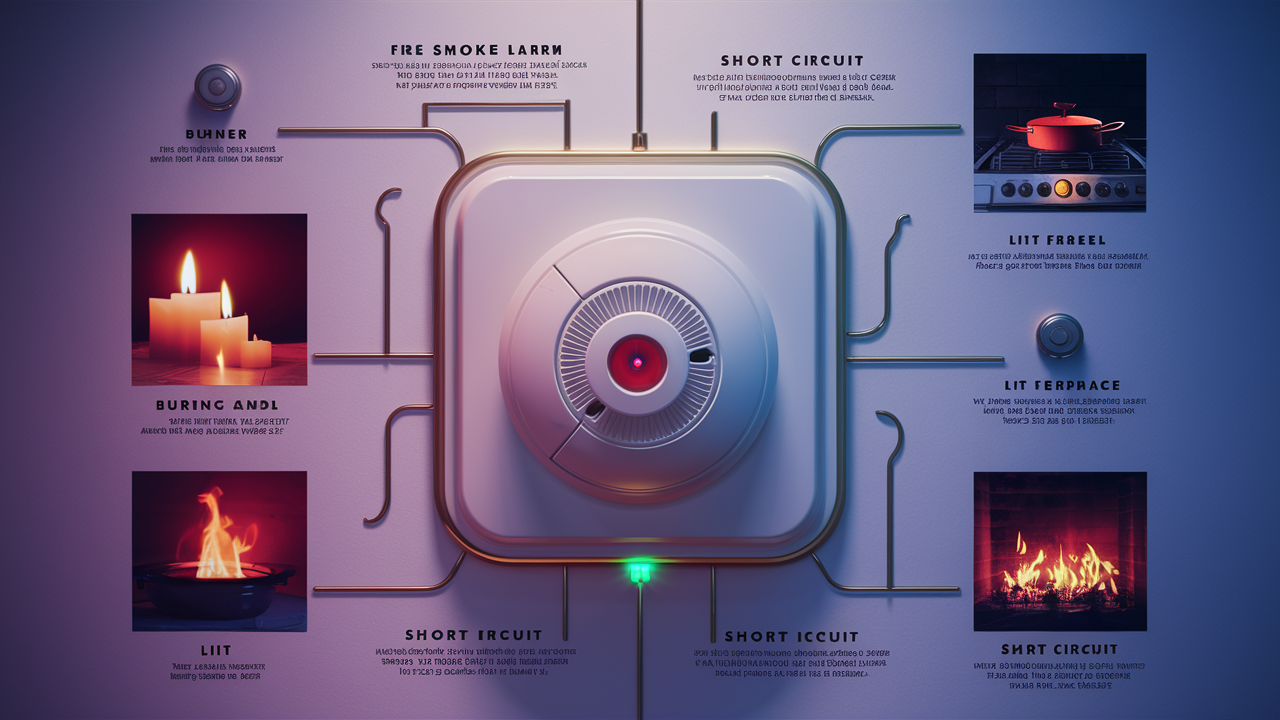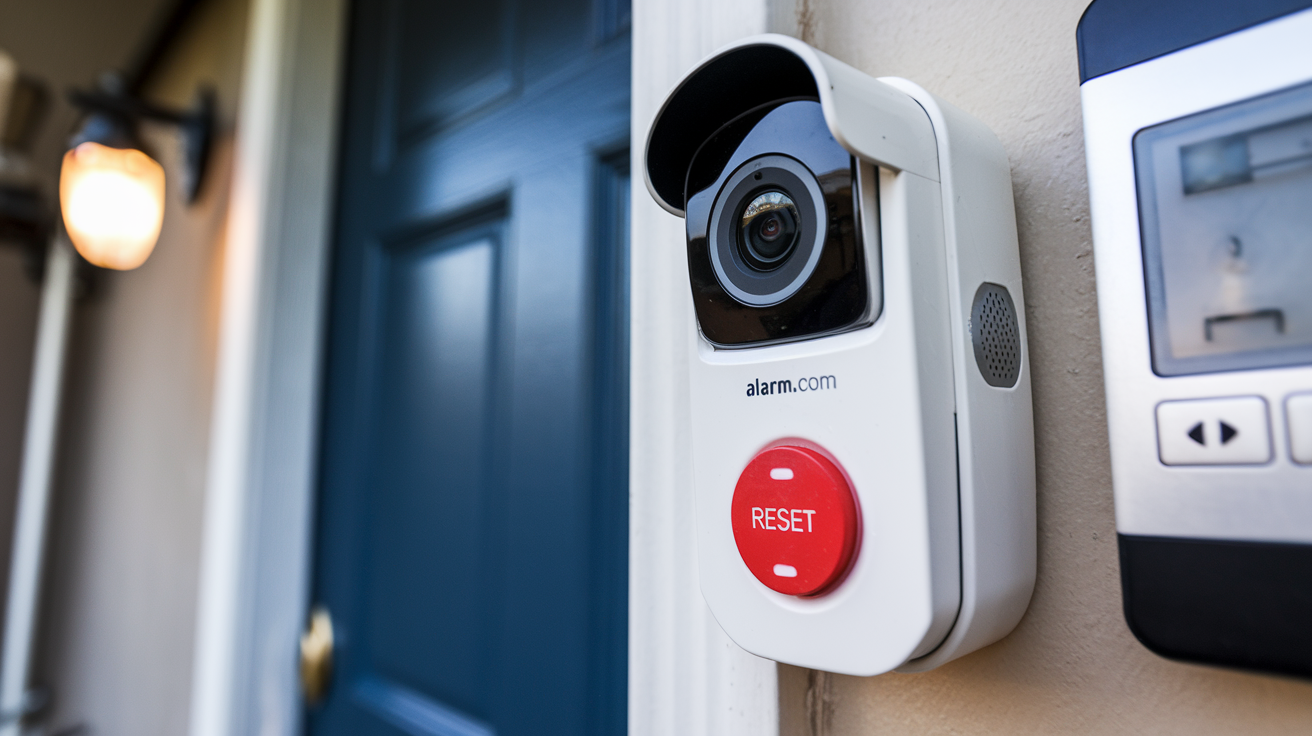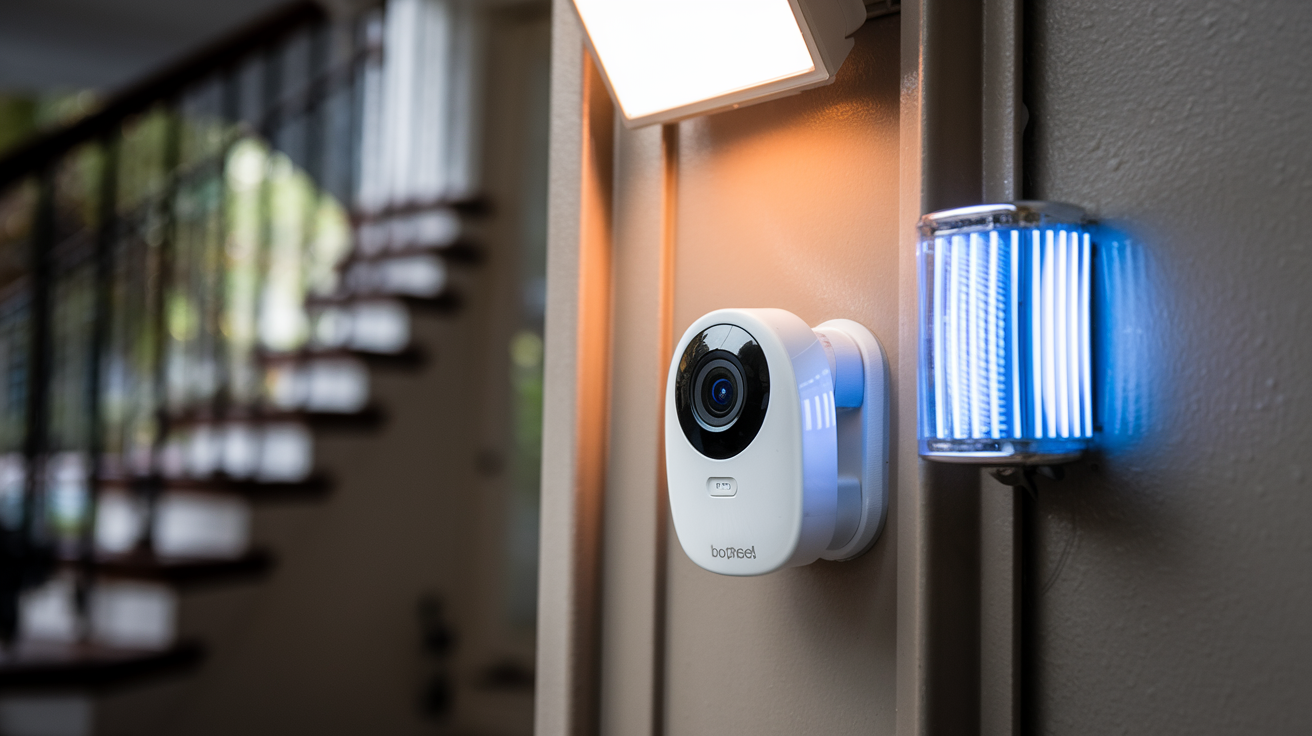Every house should have a fire alarm as they are a necessary instrument in the battle against fires. Essential safety devices and home security systems enable homeowners to be aware if there is a fire in their house at the first stage, thereby allowing time for evacuation. Devices used to detect smoke and heat and provide an alert sound so that building occupants may leave are fire alarms. Four different kinds of house fire alarms—smoke alarms, heat alarms, combination alarms, and fire alarms with additional capabilities—will be discussed in this tutorial. Maintaining the complete effectiveness of your house fire alarm system will depend much on your fundamental awareness of alarm kinds, their placements, and recommended maintenance techniques.
How do Smoke Alarms Function?
Smoke alarms have a small quantity of radioactive material called americium-241 that is used to help it sense smoke. In the alarm, there is a chamber which is an ionization chamber and contains two metal plates where the americium is placed. The plate is placed in the chamber with americium making the air ionize and create a small, steady electric current between them. This gives a circuit in the alarm. When smoke penetrates the chamber, smoke particles come in contact with the ions and neutralize them, thereby interrupting the flow of current. This releases gas and causes an alarm and an alert to be produced. Most models produce a loud beep sound at a level of 85 decibels which is as noisy as a lawnmower. This can alert the homeowners of the danger even if they are asleep.
There are models of smoke alarms that have an ionization sensor or photoelectric sensor instead of ionization. It consists of a light-emitting diode, or LED, which directs a beam of light onto a photo sensor. Smoke interfering with the light beam makes the sensor go off and set the alarm. A study also shows that optical sensors are slightly faster than ionizing models since they are capable of detecting large smoke particles usually for slow smoldering fires.
Where Smoke Alarms Should Be Installed?
Various organizations suggest that one should install smoke alarms on every floor of the house and in every bedroom or where people sleep. Ensure that you have an alarm outside bedrooms preferably in the central section of common hallways and the top and bottom of all staircases if your home is multi-storied. For the hardwired smoke alarms, they should also have battery backup in the event of a power failure. Every smoke alarm has a lifespan of 10 years, and therefore all of them should be replaced. Performing routine checks on alarms monthly, and replacing batteries annually or when an alarm starts to chirp will go a long way into making sure that alarms are functional when required.
Heat Alarms
Rate-of-rise heat detectors or heat alarms are installed to detect high levels of heat that indicate fast-growing fires beyond the capability of smoke alarms to halt. These work like smoke alarms but instead of smoke particles they are based on thermistors to check a rapid increase in air temperature. When the temperature of the air rises to 15 to 20 F above the room temperature within five minutes the alarm is sounded. Heat alarms are valuable as additional alarms for garages, kitchens, attics, and other zones where smoking or dust could trigger nuisance alarms.
Dual Sensor Smoke and Heat Alarm
Combination alarms contain both ionization or photoelectric smoke sensing technology and heat detectors in a single alarm. If either smoke or a high rise in the room temperature is sensed, the alarm will be triggered. These alarms are combination alarms that offer a higher level of protection and minimize false alarms. Combination alarms are suitable to be installed in various areas of a home including the living area.
Home Alarm Systems
Home alarm systems provide whole-home protection that includes the intersection of fire alarms with other security functions. Home fire alarms employ at least two detection techniques such as ionization, photoelectric, carbon monoxide, heat, and so on; they draw their power from the home electrical system but with battery backup. With monitored systems, when a fire is discovered in the home, the systems can alert emergency responders on their own. Other features can be as simple as intrusion alarms, and surveillance cameras or as complex as controlling lighting and appliances. Professional installation and monthly monitoring fees cover emergency services as well as system maintenance.
Fire Alarm
Sound and Signals Fire alarms make loud high-pitched sounds of about 85dB to notify the people inside the building. Many of the alarms have the feature of combining voice warnings to signify the presence of smoke or fire. The following enables homeowners to take necessary actions. Concerns such as low battery power or faulty components are also conveyed through buzzing or beeping sounds or even verbal alerts. Fire alarm audible alerts are crucial in giving fire signals the necessary attention thus explaining the importance of understanding them.
Fire Alarm Maintenance
Even though fire alarms are designed to last indefinitely with very little maintenance required, there are certain practices that homeowners should make sure to keep up to guarantee the effectiveness of the alarm. It is recommended to test all the smoke alarms each month by pressing the test button until the alarms are heard. This confirms that the electronics, power supply, and horn are functional. Smoke detectors must also be vacuumed regularly so that dust, dirt, and debris that can hinder the operation of the alarm are removed. Batteries in battery-powered units should be replaced annually or when there is an indication of low power through a chirping sound. Sensors in most models also decrease sensitivity after a while and so should be replaced every 10 years. Maintenance makes sure that one gets an early sign in case of an emergency.
Getting an early warning when a fire is in its early stage can be of great help in preventing the complete loss of lives and property. Proper installation and maintenance of fire alarms for all the living areas guarantee that the alarms function correctly in the event of a fire. In case you require help in choosing and placing smoke alarms or a monitored home fire system, seek advice from a security expert for what matters most – your family.
Protect your home today with ADT’s top-rated security solutions!
Call now at +1 877-470-7879 to get a free consultation and find out how you can secure your home with the best in the business. Don’t wait—ensure your peace of mind with ADT!






